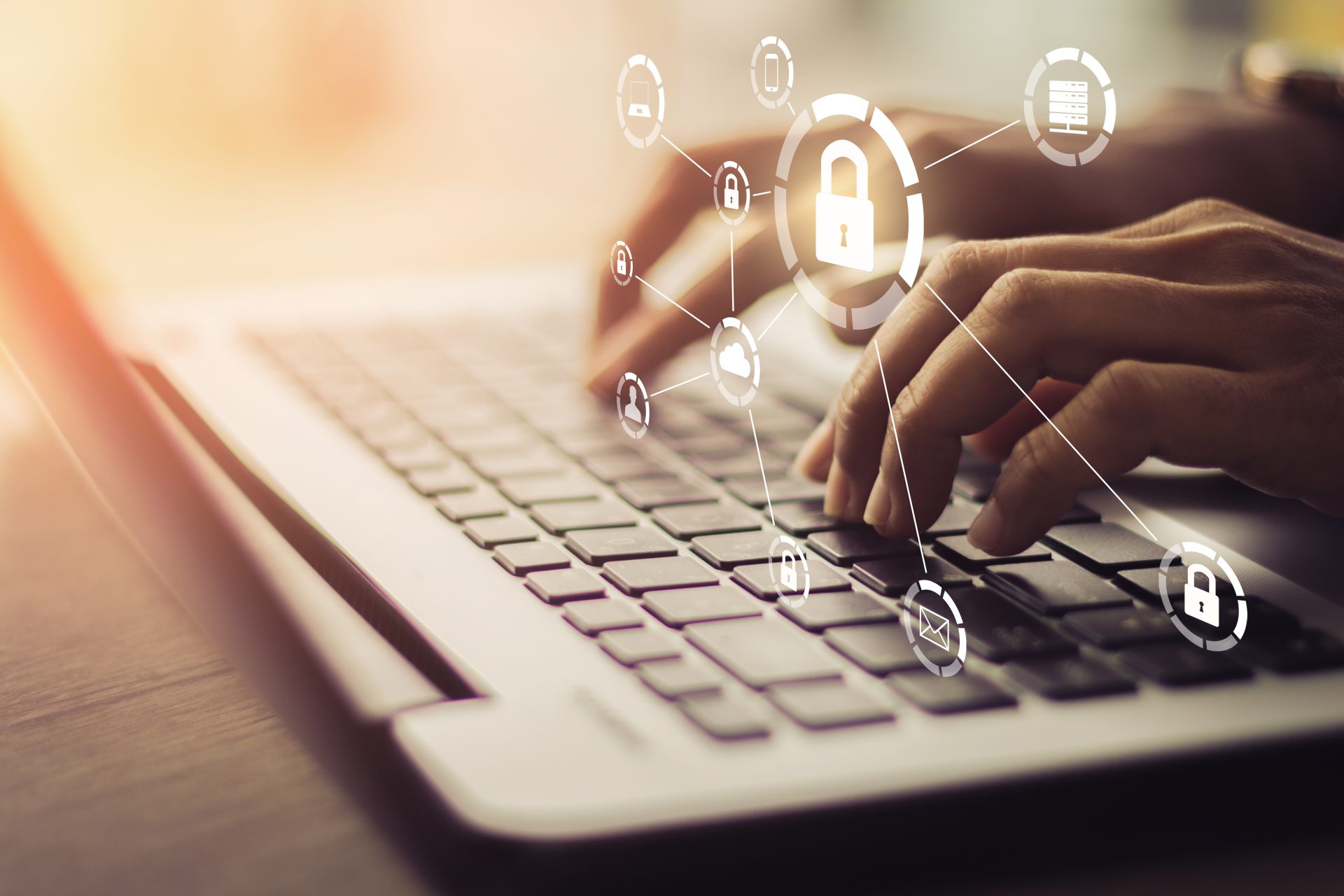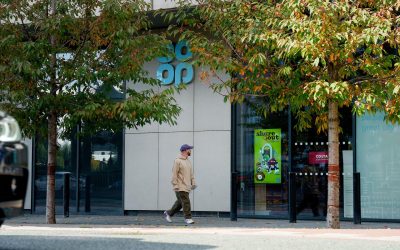Latest news!
Keep up to date with all things Commercial. Whether it’s an award win, a new client partnership or progress on our sustainability journey, you can read about it here.
Building a vibrant community: Sharing our success storys, news and updates
At Commercial, we believe that fostering a sense of community and transparency is essential to our growth and success. That’s why we are committed to sharing our achievements, milestones, and regular updates with you. We want to provide you with a comprehensive picture of life at Commercial.
Our organisation is a dynamic and thriving hub of activity, with numerous exciting developments taking place across various departments and teams. We are deeply passionate about the work we do, and we take immense pride in the positive culture we’ve cultivated within our company.
Through our updates and success storys, we aim to offer you an inside look at our journey, our accomplishments, and the incredible people who make Commercial what it is. We believe that transparency and open communication are the cornerstones of a strong and connected community.
So, we invite you to read on and discover more about our ongoing endeavours, news, innovative projects, and the individuals who contribute to our collective success. Join us in celebrating the milestones we achieve, the challenges we overcome, and the values that drive us forward.
Inspiring the workforce of the future: Students get hands-on STEM experience with Commercial
Commercial partners with Balcarras School to showcase real-world careers in tech and...
Aspris Children’s Services Tackling Energy Consumption with Commercial Partnership
To improve sustainability and energy efficiency across their 94-site estate, children’s services...
Commercial Crowned Co-operation Champions at Co-op Difference Awards
AMBITIOUS 1,000 STORE DIGITAL SCREEN ROLLOUT PRAISED BY RETAIL GIANT AS PART OF AWARD CEREMONY “It...
Clients discover the power of AI with Commercial and Microsoft
From hands-on experiences to real-world case studies, we turned AI into action. Commercial clients...
Commercial’s Change Champions Launch Employee Community
Commercial’s latest Change Champions project is live, with ‘Team Panda’ coming together over the course of three months to deliver yet another transformational brief for the business.
Health and social care providers Priory exploring the healing power of the sun
Commercial are helping leading health and social care provider Priory with their ambition of providing carbon emission-free care to their patients.
Commercial showcase how data offers real Scope for Change
The increasingly important role data plays in driving down Scope 3 emissions was the key focus of Commercial’s Scope for Change Supplier Day this month.
Co-op Media Network become latest big-name retailer to boost digital footprint with Commercial
Co-op Media Network (CMN) have followed in the footsteps of Vision Express and Costa Coffee in putting their trust in Commercial’s Smart Technologies specialists to deliver a front-of-store digital screen rollout at 300 of its highest-footfall stores.
Commercial partner with measurable.energy to cut energy waste and save costs with AI smart sockets
measurable.energy, a leading provider of energy and carbon-saving sockets and trusted business transformation experts Commercial, known for their strong commitment to sustainability are excited to announce their new partnership.
Raising vital funds for Hospiscare
IT Service Delivery Manager Alex DeGaris and Commercial’s embedded IT Manager Matt Hilling are braving a sponsored Firewalk in aid of Managed Service client Hospiscare.
£4million in social value? That’s par for the course
Commercial and Coventry Building Society will celebrate a partnership that has broken the £4million social value barrier when they face each other on the golf course next month.
Commercial ‘part of the club’ as ITSA Digital Community founding member
Commercial have reinforced their commitment to ITSA and reducing the digital divide by becoming a Founding Member of the ITSA Digital Community business club.
“Let’s see that on the (even bigger and better) big screen”
A digital revolution is taking place at one of the country’s most famous old sports stadiums thanks to the work of Commercial’s smart technology team.
CHAS Accreditation confirms Commercial’s commitment to excellence
Commercial are set to further ease the workload for their clients, having achieved CHAS Advanced Accreditation, which includes a PAS 91 certification.
A day on the farm could become a farm of our own
LOVE NATURE EVENT 2024 Family Day at Cotswold Farm Parkstrengthens ambition What started as a day...
Commercial create stunning French Connection flagship store
Commercial’s business transformation experts have created a “flagship store to be proud of”, according to the bosses of fashion retail giants French Connection.
International rescue by Commercial’s team of IT experts
In a groundbreaking move, Commercial’s IT support team has achieved a significant milestone by extending their expertise beyond borders to assist an organisation in the aftermath of a cyber-attack.
Betfred dead cert with Commercial pays out early
Following a competitive tender, business transformation specialists, Commercial, have been awarded a three-year GNFR contract by one of the UK’s top 10 bookmakers, Betfred.
Shortlisting for the ESG awards
Commercial has been shortlisted for the ESG awards in recognition of its hugely successful campaign Putting the Value into Zero.
Solar innovation adds emission free miles
The latest piece of original thinking by Commercial has led to more than 3,000 emission free miles being added to our delivery and service fleet.
French Connection’s Headquarters
Discover French Connection’s stunning new 14,275 sq. ft. London Headquaters, where innovation meets timeless design for a captivating and inspiring workplace.
Ready to Connect?
Contact Us Today!
We’re here to answer your questions, address your concerns, and explore how we can collaborate to achieve your goals. Whether you’re interested in our services, seeking more information, or simply want to start a conversation, we’d love to hear from you.
Discover Our Comprehensive Range of Services
Uncover Your Access Point to an Array of Versatile Services Tailored to Meet Your Business Requirements and Surpass Your Expectations
Guided by an Unyielding Dedication to Excellence, Innovation, and Customer Satisfaction, we take great pride in introducing our comprehensive suite of services, intricately tailored to address the distinctive challenges presented by today’s dynamic business environment.
Our resolute commitment lies in delivering solutions that foster growth, optimise efficiency, and elevate your competitive edge. Equipped with a team of experts armed with extensive industry knowledge and cutting-edge technology, we are fully prepared to collaborate with you on your path to success. Regardless of your organisation’s size or the intricacy of your needs, our services are designed to flex, evolve, and deliver tangible results. We cordially invite you to delve into the possibilities and explore how our expertise can bring your vision to life.

Modern Workplace
Transforming work environments for efficiency and collaboration.
SEE MORE

Business Essentials
SEE MORE

Cloud & Datacentre
Harnessing technology for agile and scalable solutions.
SEE MORE

ESG Consultancy
SEE MORE

Digital Workspace
SEE MORE

Retail Reimagined
SEE MORE

Cyber Security
Constant safeguarding digital assets against evolving threats.
SEE MORE

Managed Services
SEE MORE
Modern Workplace
Transforming work environments for efficiency and collaboration.

Technology
Peripherals | Productivity | Tools | Security & Deployment | User Devices

Business Interiors
Furniture | Move Management | Home Workers
Business Essentials
Core strategies for streamlined operations and growth.

Workplace Supplies
Client Analytics | Low Carbon Deliveries | Client Experience
Power BI Reporting | Pricing Options | Procurement Automation
Product Consolidation | Sustainable Sourcing | Moving to Commercial

Facilities
Cost in Use Audit | Signage

PPE & Workwear
High Visibility | PPE
Cloud & Datacentre
Harnessing technology for agile and scalable solutions.

On-Prem Private Cloud
OS & Core Services | Software & Tools

On-Prem Hosted Cloud
Disaster Recovery-as-a-Service
Infrastructure-as-a-Service

Public Cloud Services
Cloud Fundamentals | Cloud Optimisation
Microsoft Virtual WAN | SQL in Azure

Edge Computing
WAN & LAN Architecture
ESG Consultancy
Guiding sustainability practises for ethical and financial success.

Consultancy Services
ISO 14001 & 50001 | Net-Zero Strategy | Supply Chain | Zero Waste to Landfill

Sustainable Solutions
Greywater Recycling | Power Reduction | Renewable Energy
Digital Workspace
Empowering productivity through virtual tools and connectivity.

Buildings & Facilities
Corporate Communications | Digital Vending
IoT & Sensory Systems | Wayfinding
Workspace Booking

Managed Print Services
Printers and MFDs | Print Room Technology
Print Management | Productivity Apps
Device Security

Information Management
Workflow | Information Storage
Security & Compliance

Process Automation
Onboarding Processes | Contract Management
E-Forms and Approvals
Retail Reimagined
Innovating customer experiences in the ever-evolving retail landscape.

Fulfilment Services
3PL | Customise Deep Storage | ESG Procurement | GNFR Fulfilment
Integrated P2P | Integration Consultancy | Stock Forecasting | Stock Management
Supplier Management | Supplier Transition | Supply Chain Governance

Smart Technology
In-store Audio | In-store Experience | Retail Digital Signage
Robotics | Sensory Experience | Virtual Spaces
Cyber Security
Safeguarding digital assets against evolving threats.

Detection & Response
Digital Forensics | EDR & MDR | Web & Email Filtering

Early Warning & Prevention
Multi-factor authentication | PEN Testing
Privileged Access Management | Dark Web Scanning
Vulnerability Scanning | Zero Trust Solutions | Risk Assessment

Governance
Compliance & Auditing
Managed Services
Outsourcing solutions for optimised business functions.

Managed Services
Cloud & Datacentre
Cyber Security
Digital Workspace
Modern Workplace
Send our General Enquiries team a message
We take your safety seriously at Commercial, and that's why we use something called a "One-Time Password" or OTP. It's like a secret code sent to your email to make sure it's really you! To submit your enquiry, please complete the relevant fields and verify your email address using the Passcode button.
We encourage you to reach out to us with any enquiries, feedback, or collaboration opportunities you might have. Whether you're seeking more information about our products and services, have questions about our mission and values, or simply want to connect, our website is the ideal platform. We value every interaction and are committed to providing timely and informative responses to ensure your experience with us is smooth and satisfying. Your input drives us forward, so please don't hesitate to get in touch via the convenient contact form on this page. We look forward to hearing from you and building meaningful connections.
Your Commercial team
Customer Safety:
At Commercial, customer safety and data security are paramount.
That’s why we utilise one-time passwords (OTP) to verify email addresses and ensure a secure user experience.
When communicating with us via our website, you’ll receive a unique OTP via email, which acts as a temporary code to confirm your identity.
This additional layer of authentication safeguards against unauthorised access and protects your personal information from potential threats. By implementing OTP verification, we maintain the highest standards of confidentiality, providing our valued customers with peace of mind and a safe environment for their online interactions.
Your trust is our priority, and we are committed to upholding the utmost security measures to protect your data at every step.




















